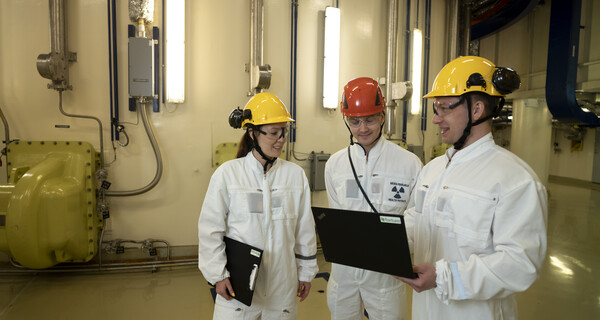Working at a nuclear power plant
Working in a so-called uncontrolled area is no different from other industrial work. Those systems that contain or may contain radioactive materials are located within the so-called controlled area and are closely monitored.
The controlled area is demarcated and access and egress is through personnel monitors. At the perimeter, it is ensured that everyone entering the control area is equipped with basic equipment and dosimeters. Nothing may be taken out of the control area without careful measurements.
Radiation and the environment
Normal operation of the Loviisa nuclear power plant results in very low radiation doses to the environment. The annual radiation dose to the population in the vicinity from the operation of the plant is so low that it cannot be measured.
Calculated, it is at most on the order of a thousandth of the dose from natural sources. This means that a person living in the immediate vicinity of the power plant all year round would have an average annual exposure of about 0.001 mSv from the emissions of the power plant. This corresponds to the amount that a local resident would receive from natural radiation in a few hours. In the eastern Uusimaa, natural radon concentrations are high due to the granitic rock and soil.
Radiation dose and dose rate
The radiation dose describes the health damage caused by radiation. It is often expressed in thousandths of a sievert, or millisieverts (mSv), or parts per million, or microsieverts (µSv).
The dose rate indicates the dose a person receives in a given time. The unit of dose rate is sieverts per hour (Sv/h).
